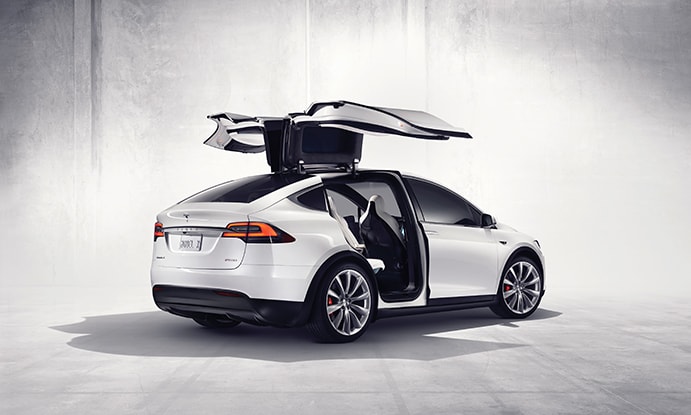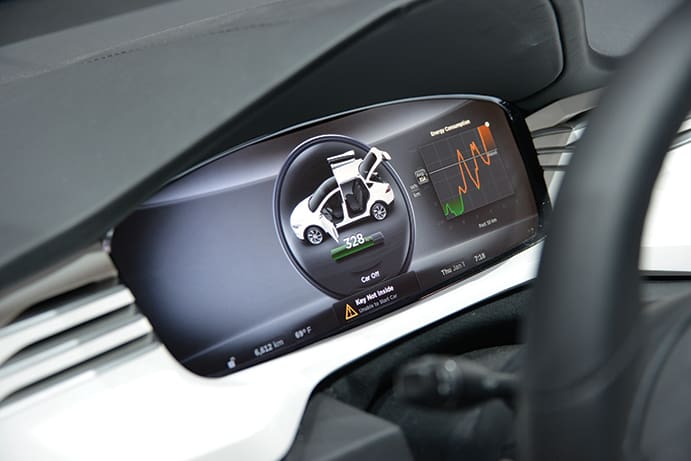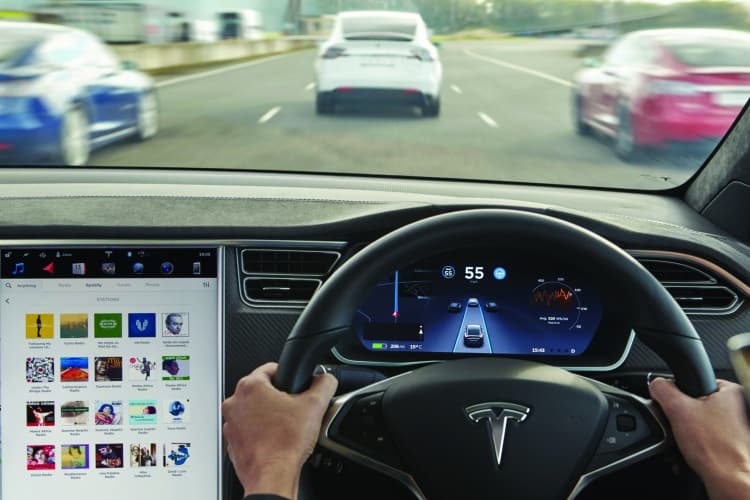For almost as long as people have been hypothesising about the cars of the future there has been the dream that these machines would one day drive themselves. It’s a vision straight out of The Jetsons, but now, of course, it’s here. Or at least very nearly.

In the absence of a futuristic Utopia we took to the roads around Tesla’s London Heathrow store to sample the brand’s latest offering, the Model X. Like that of its technologically identical saloon counterpart, the Model S, this car’s Autopilot system is technically defined as an SAE Level 2 driver aid. That means it can accelerate, brake and steer for itself under certain conditions, but you can forget any notions about sliding into the passenger seat and catching up on some emails.
Tesla is totally upfront about this fact, although it does say the hardware is ready to support full autonomy as and when the software calibration – and presumably a certain amount of legal wrangling – allows. Right now, you’re not allowed to take your hands off the wheel for more than a couple of seconds or the car’s electronic brain will shut down the Autopilot. Think of this, then, as a highly sophisticated cruise-control system.
The Model X calls upon a formidable array of transducers to make sense of its environment. Eight cameras provide full 360-degree vision up to a range of 250m, while 12 ultrasonic sensors can detect both hard and soft objects at up to 5m. There’s also a forward-facing radar system, which is able to penetrate rain and fog; it can even bounce signals underneath the car in front to see what’s happening further up the road.

The name (and indeed the spec sheet) might sound like they’ve been pinched from a passing spaceship, but the Tesla is surprisingly easy to get to grips with. You gaze out through the largest windscreen fitted to any production car, with a subtly elevated view over the other traffic. Despite its considerable dimensions – longer and wider than a Range Rover – the Model X is straightforward to place on the road. There’s a single-speed transmission, so you simply pick forward or reverse and go. With the regenerative braking turned up your foot rarely needs to leave the accelerator.
Once you’re over 20mph the Autopilot can be engaged by pulling the cruise-control stalk. The system will only take over if it can detect white lines on both sides, and there’s a graphic in the dashboard display that shows you exactly where the vehicle sits within its lane. This also shows the proximity of other traffic, which provides reassuring confirmation the car is aware of its surroundings.
The next thing you notice is the Tesla’s positioning. It’s almost certainly more accurate than that of a human driver, but it is a little disconcerting initially when you realise the car’s idea of where it should sit on the road doesn’t necessarily tally with your own.
We followed the gentle curves of the M4 for a few miles, with smooth inputs and pinpoint precision, before trying out the Tesla’s party piece. Indicate to change lanes while in Autopilot and the car – if it deems it safe – will do so for you. There’s a slight lull and then a gentle push as if a giant hand were guiding you across the carriageway. While the rate of yaw is probably comparable to that of a typical human driver the steering input is so progressive that you’re not really aware of a point where the car starts to rotate. It’s a little eerie the first time.

Soon, though, it all becomes second nature. As with other adaptive cruise-control systems, the car will accelerate or brake to reach your chosen speed, and you can also specify the gap it leaves to the vehicle in front. Meanwhile, the computer keeps a watchful eye out for anyone cutting into your lane. As you can imagine, this happened a lot during rush hour on the M4, and yet the Tesla remained totally unflustered.
It’s also worth pointing out that the Model X is a very respectable steer when choice or necessity compels you to take control. Despite a hefty 2,467kg kerb weight, it handles with aplomb, while the performance on tap is faintly surreal for a large SUV, with a Ferrari-bating 3.1-second 0 to 62mph time in 100kWh form. Driven more sedately, we’re told it will cover around 250 miles on a full charge (the official NEDC figure is 336 miles) and cabin refinement is up there with the very best combustion-engined opposition. The car of the future? It’s certainly a major step.




April 1886: the Brunkebergs tunnel
First ever example of a ground source heat pump?